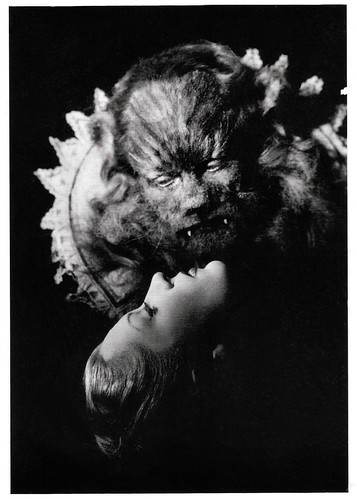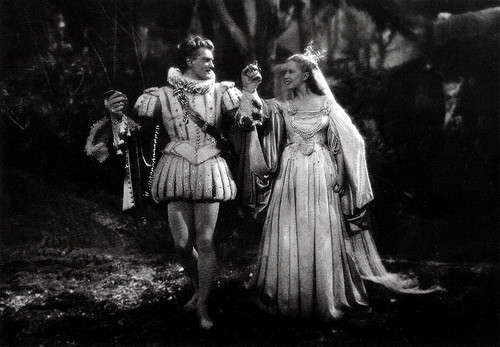
Swiss postcard by News Productions, Baulmes, no. 56515. Photo: Collection Cinémathèque Suisse, Lausanne. Jean Marais and Josette Day in La belle et la bête/Beauty and the Beast (Jean Cocteau, René Clément, 1946).

French postcard, no. C130. Photo: Josette Day in La belle et la bête/Beauty and the Beast (Jean Cocteau, René Clément, 1946).

French postcard, no. C142. Photo: Aldo. Jean Marais and Josette Day in La belle et la bête/Beauty and the Beast (Jean Cocteau, René Clément, 1946).
One of the most beautiful fantasy films of all time
La belle et la bête/Beauty and the Beast (Jean Cocteau, René Clément, 1946) is a French black-and-white fairy tale adaptation. This film is often cited as one of the most beautiful fantasy films of all time and to some extent inspired Disney's animated film, Beauty and the Beast (Gary Trousdale, Kirk Wise, 1991).
At the end of World War II, Jean Marais suggested to Jean Cocteau that he make a film based on the 18th-century fairy tale of Madame Jeanne-Marie Le Prince de Beaumont. Cocteau thought it was an excellent idea. Not only did it coincide with the dreams he had in his childhood - but it also offered an opportunity for a new genre within the film: filmed fairy tales. During the shooting of the film, Cocteau became very ill because of a skin disease and eventually had to be hospitalised. While he was recovering, René Clément served as the director.
The leads feature Josette Day as Belle and Michel Auclair as her brother Ludovic. He gave the role of the Beast to the actor who was then seen as the world's most beautiful man, Jean Marais. Marais plays a triple role as the beast, Belle's worshipper (Avenant) and the prince. Georges Auric wrote the music and Henri Alekan did the camera work. Christian Bérard and Lucien Carré did the art direction. The House of Lanvin made all of the costumes, with resident designer Pierre Cardin supervising the men's wardrobe. Many rules were broken during the making of this film, Auric's music breaking rather than underlining the visual effects. Alekan's camerawork is not conventional, but sharp and clear - almost like a documentary.
It was the first film that Jean Cocteau both wrote and directed since his debut Le sang d'un poète/The Blood of a Poet (Jean Cocteau, 1932). On the surface, La belle et la bête seems different from the previous one, but both films work with myths and create an atmosphere of unearthly beauty. In his adaptation, Cocteau made morality play a role subject to magic, symbolism, surrealism and psychoanalysis. There are human arms anchored in the wall carrying candlesticks and caryatids with moving eyes and exhaling smoke. Cocteau also placed several enchanted lucky charms and enchanted gardens in the film. The film was shot in the French countryside, in a setting that lends credibility to both the down-to-earth, realistic home of Belle and her family. The Beast's castle exteriors were shot at the Château de la Roche Courbon, a French historic site.
La belle et la bête is known for its surrealistic qualities and its use of existing film techniques to evoke a sense of magic and enchantment. Cocteau shows here how difficult it is sometimes to separate fantasy from reality. The camera work and set designs reference nineteenth-century artist Gustave Doré's illustrations and engravings and, in the farm scenes, Johannes Vermeer's paintings. Jean Cocteau's use of imagery provided a lot of surrealist or Jungian analysis. La belle et la bête remains true to the fairy tale in spirit, but the portrayal is definitely Cocteau's. With this, he inspired later directors such as Ingmar Bergman, François Truffaut and Vincente Minnelli.

French card by Editions La Malibran, Saint-Dié, no CF 19. Photo: Aldo. Jean Marais, Marcel André, Michel Auclair and Josette Day in La belle et la bête/Beauty and the Beast (Jean Cocteau, René Clément, 1946).

French card by Groupes National des cinemas de recherche (CNC). Josette Day in La belle et la bête/Beauty and the Beast (Jean Cocteau, René Clément, 1946).

French postcard, no. C 141. Jean Marais and Josette Day in La belle et la bête/Beauty and the Beast (Jean Cocteau, René Clément, 1946).
A monster with magical abilities, created as half-man, half-animal
A merchant (Marcel André) lives in the countryside with his son Ludovic (Michel Auclair) and three daughters, Félicie (Mila Parély), Adélaïde (Nane Germon) and Belle (Josette Day). The merchant is balancing on the brink of bankruptcy. His two eldest daughters are vain, selfish and mean and treat their youngest sister Belle like a servant. Jean Cocteau regularly mocks them in the film, for instance when he lets clucking ducks be a comment on their bickering between them.
One day, the father leaves on a business trip. Before his departure, he promised his daughters to bring back gifts. For Félicie and Adélaïde beautiful dresses and for Belle a beautiful rose. On the way, he gets lost in a forest. There he discovers a strange castle, where he picks a rose to give to Belle. Suddenly, the owner of the castle (Jean Marais) appears, a monster with magical abilities, created as half-man, half-animal.
The lord of the castle condemns the merchant to death unless he gives him one of his daughters. Belle sacrifices herself and goes to the castle. Her journey to the castle is filmed in slow motion, creating a dreamy atmosphere. When she meets the beast, she faints. Slowly, she learns to love him. It turns out that only she can see his hidden inner beauty. The real beast turns out to be Avenant, the one who wants to marry her.
There are two different worlds in this film, the ordinary bourgeois home of the merchant on the one hand, and the enchanted castle of the Beast where anything is possible. These two worlds are linked by the mysterious forest. In and around the castle live the candelabra, the gardens and the caryatids.
Throughout the film, the Beast unveils five magical guides, the rose, a golden key, a gauntlet, a ring and the mirror, some of these are taken from Madame Leprince de Beaumont's fairy tale. Later this is joined by the white horse, "le Magnifique", and in the end, these two worlds come together. Belle's room is in her father's room - but also in her castle room. When Avenant dies, the Beast becomes the Prince he once used to be.

Swiss postcard by CVB Publishers. Image: Collection Cinémathèque Lausanne. Reproduction of the French film poster for La Belle et la Bête (Jean Cocteau, René Clément, 1946). The poster was designed by Cocteau's friend Jean-Denis Malcles.

German postcard by Film und Bild, Frankfurt a.M. Photo: Aldo Graziati / IFA. Publicity still for La belle et la bête/Beauty and the Beast (Jean Coctteau, 1946).
Sources: Wikipedia (Dutch) and IMDb.
No comments:
Post a Comment